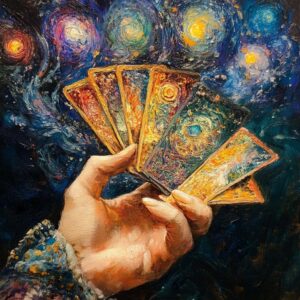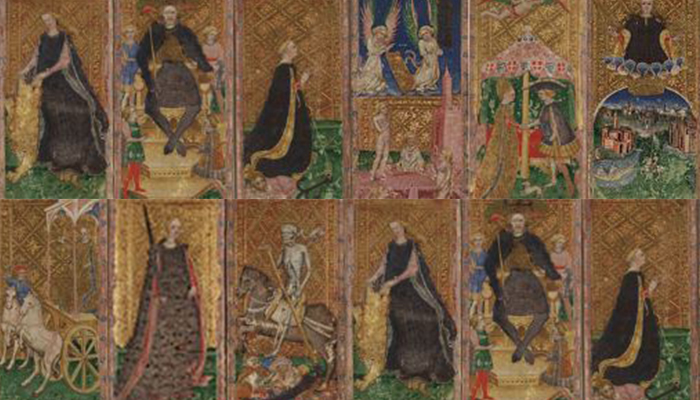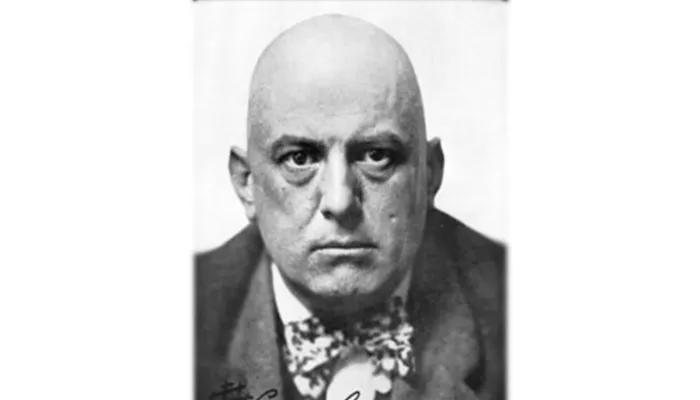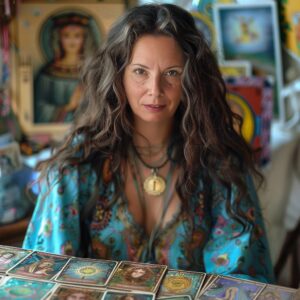
Tarot cards are one of the most well-known methods for guiding the soul on life’s path, developing intuition, and seeing the future. Similar to numerology, astrology, palm reading, the Book of Changes (I Ching), and many other systems designed to provide guidance.
Tarot cards have captivated minds and spirits for centuries, offering a window into the unseen realms of our existence. These intricate cards, steeped in history and symbolism, serve as both a guide and a mirror, reflecting our deepest desires, fears, and aspirations. The Way of Tarot Cards explores the profound art of tarot reading, unveiling the secrets behind each card and how they interact to reveal insights into our lives. Whether you are a curious novice or a seasoned practitioner, this article delves into the essence of tarot, helping you understand its transformative power and how it can illuminate your path forward. Join us on a journey through the arcane wisdom of the tarot, and discover the keys to unlocking the mysteries that lie within.
In a modern Tarot deck, there are 78 cards divided into two main groups: the Major Arcana and the Minor Arcana. The term "Arcana" comes from the Greek word meaning secret and mystery. The Major Arcana consists of 22 cards, while the Minor Arcana has 56 cards. The Minor Arcana is further divided into four suits: the Wands, representing the fire of creation and human desires; the Pentacles, symbolizing earth, stability, and human needs; the Cups, representing water, emotions, and flow in a person’s life; and the Swords, symbolizing air and logical thinking. Each suit also includes four Court Cards: the Page, representing youth and inexperience; the Knight, symbolizing a stage of maturation; the Queen, representing action; and the King, who acts primarily under pressure.
Tarot cards, which began to be used in various parts of Europe in the mid-15th century for games like Italian "Tarocchini" and Austrian "Königrufen," are still played today. Originally called "trionfi" or "tarocchi" and later "tarock," these cards began to serve spiritual purposes, and specially designed decks were created for this purpose. The designs and sizes of Tarot decks evolved across Europe, crafted by many artists. Modern Tarot decks are still used for card games in parts of Europe, such as Italian Tarocchini and French Tarot. In English-speaking countries, Tarot cards are almost exclusively used for divination and guidance.
The origin of the term "Tarot" and the German "Tarock" is unclear, but it is believed to derive from the Italian "tarocchi," which, by the late 15th century, was synonymous with foolishness. The name first appeared in Brescia around 1502 as "tarocchi."
Part of the mystery surrounding Tarot cards is their origin. It is claimed that they originated from ancient Egypt and were deeply rooted in the knowledge of Egyptian priests. Antoine Court de Gébelin believed that Tarot cards were based on a sacred book written by ancient Egyptian priests and brought to Europe by gypsies. This theory lent Tarot cards an aura of ancient esoteric knowledge, though there is no historical evidence connecting gypsies to Africa. Others link Tarot cards to Jewish Kabbalah, an ancient mystical and secret tradition dating back to the 12th century in France, Spain, and the East. Kabbalah focuses on the human aspiration to unite with the divine and reduce the gap between divinity and the material world. Tarot cards are also associated with the Chinese I Ching and Indian Tantra.
Another possible origin of Tarot cards is a game similar to modern bridge. Wealthy Italian families commissioned artists to create hand-painted decks known as "Carte Da Trionfi" or "Victory Cards." These were made to commemorate significant births of royalty, victories in battles, or other important events. Among the renowned artists who painted Tarot cards was Leonardo da Vinci.
The earliest known Tarot deck was created in the 15th century, with dates ranging between 1440 and 1450 in Milan, Ferrara, Florence, and Bologna. The earliest recorded mention of Tarot cards is a written declaration in the Florence court records from 1440.

In a modern Tarot deck, there are 78 cards divided into two main groups: the Major Arcana and the Minor Arcana. The term "Arcana" comes from the Greek word meaning secret and mystery. The Major Arcana consists of 22 cards, while the Minor Arcana has 56 cards. The Minor Arcana is further divided into four suits: Wands, representing the fire of creation and human desires; Pentacles, symbolizing earth, stability, and human needs; Cups, representing water, emotions, and the flow in a person’s life; and Swords, symbolizing air and logical thinking. Each suit also includes four Court Cards: the Page, representing youth and inexperience; the Knight, symbolizing a stage of maturation; the Queen, representing action; and the King, who acts primarily under pressure.
These playing cards were used from the mid-15th century in various parts of Europe for games such as the Italian "Tarocchini" and Austrian "Königrufen," and are still played today. Originally called "trionfi," and later "tarocchi" or "tarock," Tarot cards began to be used for spiritual purposes, with specially designed decks created for this reason. The designs and sizes of the cards changed across Europe, crafted by many artists. Modern Tarot decks are still used for card games in parts of Europe, such as Italian Tarocchini and French Tarot. In English-speaking countries, Tarot cards are almost exclusively used for divination and guidance.
The origin of the term "Tarot" and the German "Tarock" is unclear, but it is believed to derive from the Italian "tarocchi," which, by the late 15th century, was synonymous with foolishness. The name first appeared in Brescia around 1502 as "tarocchi."
Part of the mystery surrounding Tarot cards is their origin. It is claimed that they came from ancient Egypt and are deeply rooted in the knowledge of Egyptian priests. Antoine Court de Gébelin believed that Tarot cards were based on a sacred book written by ancient Egyptian priests and brought to Europe by gypsies. This theory gave Tarot cards an aura of ancient esoteric knowledge, though there is no historical evidence linking gypsies to Africa. Others link the cards to Jewish Kabbalah, an ancient mystical and secret tradition originating in the 12th century in France, Spain, and the East. Kabbalah focuses on the human aspiration to unite with the divine and reduce the gap between divinity and the material world. Tarot cards are also associated with the Chinese I Ching and Indian Tantra.
Another possible origin of Tarot cards is a game similar to modern bridge. Wealthy Italian families commissioned artists to create hand-painted decks known as "Carte Da Trionfi" or "Victory Cards," which were made to commemorate significant births of royalty, victories in battles, or other important events. Among the renowned artists who painted Tarot cards was Leonardo da Vinci.
The earliest known Tarot deck was created in the 15th century, with dates ranging between 1440 and 1450 in Milan, Ferrara, Florence, and Bologna. The earliest recorded mention of Tarot cards is a written declaration in the Florence court records from 1440.

The oldest surviving Tarot cards are the Visconti-Sforza deck, which was painted in the mid-15th century for the rulers of the Duchy of Milan. In Florence, an expanded deck called the Minchiate was used; it included 97 cards featuring astrological symbols, the four elements, and traditional Tarot motifs.
Although Tarot reading methods have evolved over the years, with readers adopting their own unique styles, the cards themselves have not changed significantly. One can observe early Tarot cards and later ones and see how similar they remain.
The Marseille Tarot is the traditional version of the cards and serves as the source for all new decks. Interpretations of the cards are created from the illustrations themselves through personal intuition and imagination. A highly regarded and influential version of traditional Tarot decks was printed by Nicolas Conver in 1760, and it is considered the most powerful and authentic version of the Tarot.
Today, there are many versions of the Tarot deck, each reflecting the personal interpretation of its creator. The most popular Tarot deck used by many readers is the Rider-Waite deck, but there are also decks by Osho, Angels, various artists such as Leonardo da Vinci, and others.

Until the appearance of Waite's deck, only the Major Arcana had been illustrated. Waite brought interpretation to the Minor Arcana through his illustrations. Arthur Edward Waite (October 2, 1857 – May 19, 1942) was a mystic and a partner in creating the popular Tarot deck, the Rider-Waite-Smith deck. Waite was born in America and grew up in England. He joined the Hermetic Order of the Golden Dawn in 1891, but due to many internal disputes, he left the order and joined the Order of the Golden Dawn's English Rose Cross in 1902. In 1914, he left this order as well. A year later, he founded the "Order of the Rose Cross." Waite was a prolific writer in the field of mysticism and authored many books, translating mystical and alchemical works.
In 1909, Arthur Edward Waite published the Tarot deck system he created with Pamela Colman Smith, who illustrated the cards under his guidance. Waite was known to be a member of both the Hermetic Order of the Golden Dawn and the Order of the Rose Cross of England. After being a member of these two orders, Waite established the Order of the Rose Cross. These secret societies operated in England at the end of the 19th century and the beginning of the 20th century, and his Tarot deck was designed according to the principles, teachings, and symbols of these orders. The significance of the deck lies in the fact that it was the first time that works depicting symbols from secret societies were presented to outsiders who were not members of these orders.


Orit Raphael, Tarot Reader for Personal Guidance, Insights, and Messages